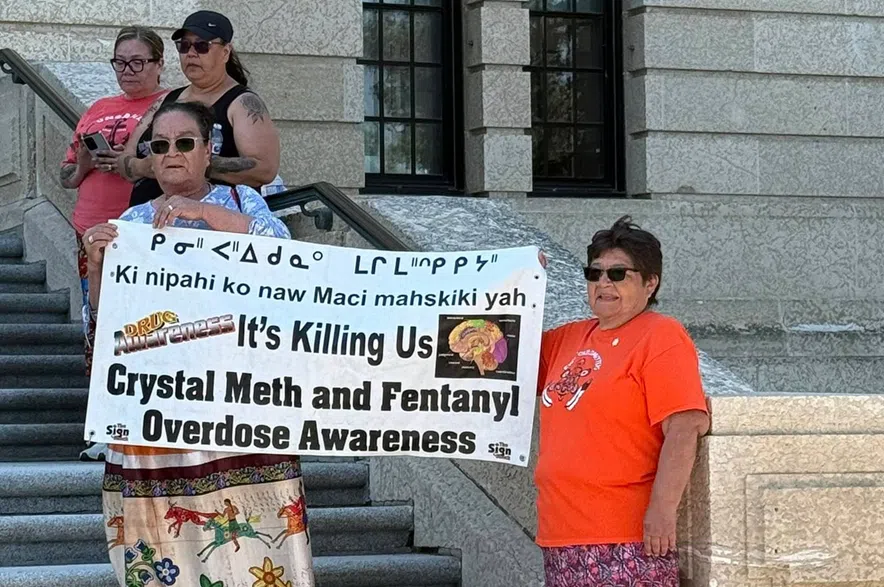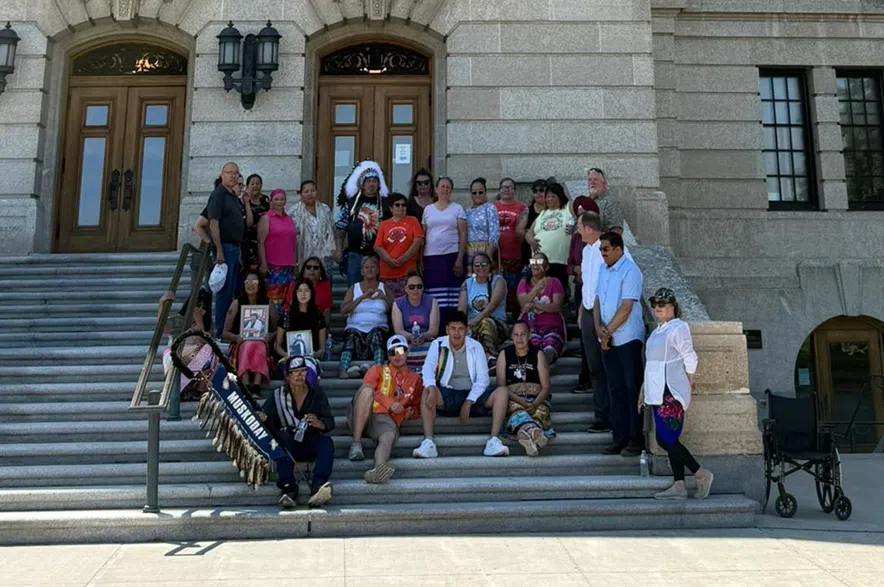Demonstrators with the third annual Crystal Meth and Fentanyl Overdose Awareness Walk arrived at the Legislative Building in Regina after walking 355 kilometres from the Muskoday First Nation.
The annual walk, which started in the First Nation just south of Prince Albert on June 9, ended in the province’s capital on Tuesday.
Read More:
- Overdose alert issued after Regina sees four suspected overdose deaths in a week
- Warning issued about dangerous red-orange fentanyl found in Saskatoon
- Saskatoon sees 30 overdoses in three days, prompting health ministry warning
According to Erica Hennie, the walk’s co-organizer, participants walked between 40 and 44 kilometres each day, stopping in several communities along the way, including Kenaston and Piapot.
She said the event about showing those struggling with addiction that people care, and are “keeping an eye out for them.”

With the walk stretching over a week, participants stayed in communities along the way including Kenaston, Piapot, and the James Smith Cree Nation. (Lissa Sugar, Facebook).
Creating shorter wait lists on reserves
In addition to showing support, the walk is meant to incite change.
Based on what she’s seen since moving to Muskoday a few years ago, Hennie said statistics aren’t reflective of actual overdose numbers.
Hennie said opioid users frequently “administer the naloxone themselves, because it’s like they have their own community.” But the consequence is that people avoid using the community’s health centre or calling an ambulance, so those overdoses go unregistered.
With more people overdosing than the numbers reflect, she said there aren’t enough detox beds available for patients.
“Every time somebody decides they want to detox, they come and ask for help to get detoxed. It’s a long waiting list – sometimes two to three weeks before they can get in,” Hennie said.
Even once a bed becomes available, Hennie said she’s witnessed instances when the patient has changed their mind and no longer wants it.
“It’s very crucial that we get more detox beds, even on the reserves. Each reserve should have their own detox bed,” Hennie said.
She said that detox centres should also to have cultural resources available in them, like First Nations nurses from the community, an on-site Elder and smudging.
Drug overdose alerts across the province
The walkers arrived in Regina just days after the Saskatchewan Ministry of Health issued an overdose alert in the city, prompted by four suspected overdose deaths within a week. They happened during a time when the city’s only supervised consumption site was closed.
An alert was issued in Swift Current last month following multiple suspected overdoses and one suspected overdose death.
The Ministry of Health issued a warning in Saskatoon last Friday about a particularly dangerous batch of fentanyl that had made its way into the city.
While naloxone is typically used to treat overdoses, it was unable to reverse all the effects caused by that batch, the ministry said.











